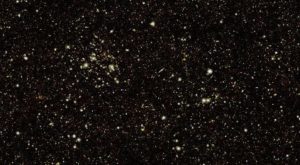
In what is a gargantuan synthetic survey of a section of the universe, astronomers have found that it could hide about 30 million or three crore new galaxies.
The survey was conducted to see what can be expected from the Nancy Grace Roman Space Telescope and its future observations of the cosmos. The synthetic survey is just a small chunk of the real future survey. Astronomers said that apart from 30 million galaxies, the simulation also revealed possibilities of finding 200,000 foreground stars in our home galaxy.
The computer simulation was conducted to plan a strategy to ensure a smooth observation schedule for the spacecraft when it begins operations. It tests different ways to mine the mission’s vast quantities of data and explore what we can learn from tandem observations with other telescopes.
“The volume of data Roman will return is unprecedented for a space telescope. Our simulation is a testing ground we can use to make sure we will get the most out of the mission’s observations,” Michael Troxel, an assistant professor of physics at Duke University, said in a statement.
The Nancy Grace Roman Space Telescope has been designed to find answers to questions in the areas of dark energy, exoplanets, and infrared astrophysics with a primary mirror that is 2.4 meters in diameter, the same size as the Hubble Space Telescope.
The observatory will have a field of view that is 100 times greater than the Hubble infrared instrument, capturing more of the sky with less observing time. Astronomers, as part of their simulation, data from a mock universe originally developed to support science planning with the Vera C. Rubin Observatory, which is located in Chile and set to begin full operations in 2024.
The Nancy Grace Roman Space Telescope will consist of both imaging and spectroscopy across the same enormous swath of the universe. It will measure the intensity of light from cosmic objects at different wavelengths and reveal precise positions and shapes of hundreds of millions of faint galaxies. These will be used to map dark matter.
“Theories of cosmic structure formation make predictions about how the seed fluctuations in the early universe grow into the distribution of matter that can be seen through gravitational lensing,” Chris Hirata, a physics professor at Ohio State University, said in a statement.
The synthetic survey covered just 20 square degrees of the sky, which is roughly equivalent to 95 full moons. The actual survey, when the telescope begins observations, will be 100 times larger and could unveil more than a billion galaxies.
“With Roman’s gigantic field of view, we anticipate many different scientific opportunities, but we will also have to learn to expect the unexpected. The mission will help answer critical questions in cosmology while potentially revealing brand new mysteries for us to solve,” Julie McEnery, the senior project scientist said.
The space observatory is being planned to be launched by 2027




 Driving Naari Programme launched in Chandigarh
Driving Naari Programme launched in Chandigarh






























